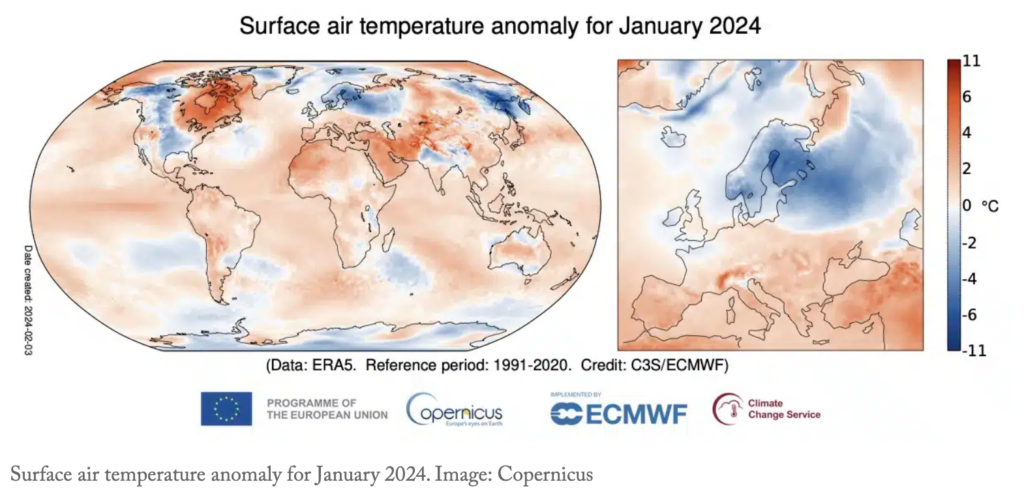March represented the 10th consecutive monthly record in a warming phase, which has beat all previous records. Over the past 12 months, average global temperatures have been 1.58C above pre-industrial levels. The Paris Agreement, set in 2015, set a limit of 1.5c above pre-industrialised levels. Scientists are hoping this is an El Niño based issue rather than a symptom of worse-than-expected global warming.
What is El Niño?
This name relates to the warming of the sea surface temperature, which occurs every few years and is usually concentrated in the central-east equatorial Pacific. When sea temperatures in the tropical eastern Pacific increase 0.5c above the long-term average, an El Niño is declared. The low-level surface winds, which normally blow from east to west along the equator (“easterly winds”), instead weaken or, in some cases, start blowing in the opposite direction (from west to east or “westerly winds”).
It’s been reported that if this ‘record’ does not stabilise by August, the world will be in uncharted territory. For the last 15 years, the world has been warming at around 0.3c per decade, almost double the 0.18c temperature increase witnessed in the 1970s.
And the problem here? Fossil fuel emissions. A survey of nearly 90,000 climate-related studies shows virtually a 100% consensus that humans are altering the climate by the burning of fossil fuels.
According to a new report released by InfluenceMap, just 57 companies and nation-states were responsible for generating 80% of the world’s CO₂ emissions from fossil fuels and cement over the last seven years.
This suggests that the Net Zero targets set by the Paris Agreement in 2015 are yet to make a significant impact on fossil fuel production. Despite this evidence most companies are failing to significantly reduce their carbon emissions. Part of this issue is down to a lack of emission regulations in many countries.

Implications of Climate Change
It’s easy to bounce statistics around, quoting figures, which for many people may just look like rather tiny temperate increases, which may not spark much fear. However, the planet’s ecosystem is incredibly fragile, and slight changes (such as 2c) will have a dramatic impact on the world we live in. Here are a few implications that a 2c increase in global temperatures will bring:
Extreme Heat – 37% of the world’s population will experience extreme heat at least once every five years. At 1.5c it’s just 14%.
Sea-Ice-Free Arctic – It’s estimated the number of ice-free summers in the Arctic will be once every ten years at a 2c increase. This figure is expected to be once every 100 years at a 1.5c increase.
Rising Sea Levels – By the year 2100, with a 2c increase, sea levels are set to rise by 0.46 metres. At 1.5c they will be closer to 0.4 metes.
Fisheries – At a 2c increase, it’s expected that there will be a 3 million tonne reduction in fish available for food. This reduces to 1.5 million tonnes lost if temperature increases are kept to 1.5c.
Crop Yields in Tropics – There will be a 7% reduction in maize harvests in the tropics with a 2c increase. At a 1.5c increase, this decline will be around 3%.
As this year progresses, we will report on any updates to this – especially if, by August, this temperature increase trend has not stabilised. In which case, as mentioned above, the world will be in uncharted territory.








